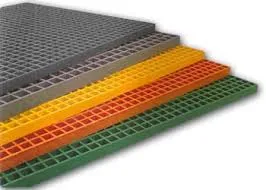loading...
- No. 9, Xingyuan South Street, Dongwaihuan Road, Zaoqiang County, Hengshui, Hebei, China
- admin@zjcomposites.com
- +86 15097380338
- Welcome to visit our website!
reinforced concrete with frp bars mechanics and design
Mechanics and Design of Reinforced Concrete with FRP Bars
Reinforced concrete has been the cornerstone of modern construction, providing the necessary strength and durability for various structural applications. However, traditional steel reinforcement bars (rebar) can be subject to corrosion, which weakens structures over time, especially in harsh environmental conditions. This challenge has led to the exploration of alternative materials, notably Fiber-Reinforced Polymer (FRP) bars, which promise enhanced performance and longevity.
Overview of FRP Bars
Fiber-Reinforced Polymer bars are composite materials made from various fibers (such as glass, carbon, or aramid) embedded in a polymer matrix. These materials exhibit high tensile strength, low weight, and excellent resistance to environmental factors such as corrosion, chemicals, and extreme temperatures. As a result, FRP bars are becoming increasingly popular in civil engineering applications, particularly for reinforcing concrete structures.
Mechanical Properties
One of the significant advantages of using FRP bars in reinforced concrete is their superior mechanical properties. Unlike traditional steel, FRP bars have a much lower thermal conductivity and are not susceptible to corrosion, thus maintaining their structural integrity over time. The tensile strength of FRP bars can be significantly higher than that of steel, allowing for a reduction in the amount of reinforcement required. Additionally, FRP materials exhibit a linear elastic behavior up to failure, indicating predictable performance under load.
However, FRP bars also have certain limitations. Their modulus of elasticity is lower than that of steel, which can lead to increased deflections in concrete elements. Therefore, careful consideration of the design is crucial to ensure that the structural performance meets the required serviceability limits.
Design Considerations
reinforced concrete with frp bars mechanics and design

The design of reinforced concrete structures with FRP bars involves several key considerations
1. Material Properties Designers must account for the specific properties of the FRP bars being used, including their tensile strength, modulus of elasticity, and bond characteristics with concrete. The properties of the surrounding concrete, such as compressive strength and shrinkage, must also be evaluated.
2. Load Analysis The anticipated loads, including dead loads, live loads, and environmental loads, must be thoroughly analyzed. FRP bars should be designed to carry these loads without exceeding their limits or leading to excessive deformations.
3. Serviceability Limit States Due to the lower elastic modulus of FRP, serviceability checks for deflection and crack control become paramount. Designers should employ appropriate factors to ensure that deflections remain within acceptable limits, especially in longer spans.
4. Durability Considerations One of the primary motivations for using FRP bars is their resistance to corrosion. However, it is essential to assess the environmental conditions and ensure that the selection of FRP bars aligns with long-term durability goals.
5. Bond Performance The bond between FRP bars and concrete is different from that of steel reinforcements. If not properly addressed, inadequate bonding can lead to slippage and loss of structural integrity. Therefore, appropriate bond mechanisms and surface treatments should be employed to enhance the interaction between the FRP bars and the concrete.
Conclusion
The integration of FRP bars into reinforced concrete design presents unique opportunities and challenges. While they offer substantial advantages in terms of strength and durability, their mechanical properties necessitate careful attention to design criteria. As research continues and the understanding of FRP materials advances, it is likely that their adoption in construction will increase, leading to innovative designs and more sustainable structures. By embracing these advancements in material technology, engineers can create safer and longer-lasting concrete structures that withstand the test of time. In conclusion, the mechanics and design principles surrounding the use of FRP bars in reinforced concrete are vital for the future of civil engineering, paving the way for improved performance in various structural applications.
-
Transform Your Spaces with FRP Grating SolutionsNewsNov.04,2024
-
The Versatility and Strength of FRP RodsNewsNov.04,2024
-
The Excellence of Fiberglass Water TanksNewsNov.04,2024
-
The Benefits of FRP Grating for Your ProjectsNewsNov.04,2024
-
Elevate Your Efficiency with FRP Pressure VesselsNewsNov.04,2024
-
Welcome to the World of FRP Pressure VesselsNewsOct.12,2024
-
Unveiling the Future of Filtration: Why FRP Filter Vessels are a Game ChangerNewsOct.12,2024
